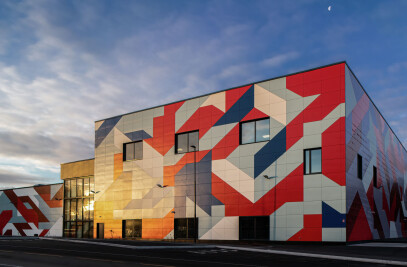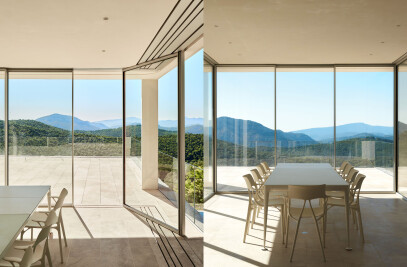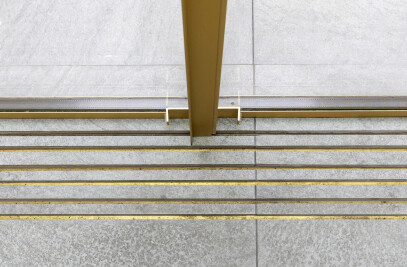In the heart of Hobart, Tasmania, Australia, the Hedberg by LIMINAL Architecture with WOHA presents a culturally significant performing and creative arts destination that fuels Tasmania’s cultural community in a global and contemporary context. A collaboration between the University of Tasmania, the Australian and Tasmanian Governments and the Theatre Royal, the project fuses the historic 1837 Theatre Royal with the 1926 Hedberg Garage, which is a heritage-listed car showroom and mechanics warehouse, and a new six-storey volume.

The project extends connections beyond the site’s colonial heritage to acknowledge the traditional landowners, the Palawa people, with elements such as an exterior cladding concept of folded aluminium that recalls the Tasmanian abalone shell, a staple of the island’s original people.

The design concept balances the theatrics of the building’s purpose with a sensitivity to place. Situated alongside Australia’s oldest and most continuously operating theatre, the historic Theatre Royal, the new development offers a thriving hub for music and performance. It is also a world-class performance venue, offering a new home for the conservatorium of Music, creative workshop laboratories, integration of the two-storey Hedberg Garage and for the first time, offers accessibility to all levels of the Theatre Royal.

The Hedberg brings a contemporary layer that reinterprets the past while acknowledging and assuring the longevity of neighbouring heritage buildings through adaptive reuse. The approach to heritage involves interweaving interpretive layers into the built fabric, which results in a deepened understanding of place and a response that continues to contribute to the site through conservation, reuse, reinterpretation, and revelation. A generous sequence of foyer spaces and front of house facilities connect the old and new buildings, creating a suite of performance venues, rehearsal and recording spaces in a shared cultural complex.

On a smaller scale, a sense of place and interconnectivity are fostered with design elements inspired by Eduardo Chillida’s interlocking sculptures and the minimalist and dancing forms found in musical notation.

The result is a development that promotes the culture of Tasmania on multiple compelling levels.


































